Pursuing a PhD is an exigent endeavor that not only requires excellent cognitive skills but also poses challenges regarding self-management and mental health. The current literature only scratches the surface of the difficulties that graduate students face in pursuing a PhD, as well as how these difficulties translate into considerable dropout rates (Frischer and Larsson Reference Frischer and Larsson2000; Ismail, Abiddin, and Hassan Reference Ismail, Abiddin and Hassan2011), low work satisfaction (Woolston Reference Woolston2019), and negative effects on mental health (Evans et al. Reference Evans, Bira, Gastelum, Todd Weiss and Vanderford2018). Most recently, changes in our workflows and working conditions due to the COVID-19 pandemic aggravated many of these challenges. Considering all of these issues, academia increasingly is debating the improvement of workflows, working conditions, and support structures. This article adopts the agile project-management framework Scrum as one possible and novel solution to these issues. Scrum usually is applied in a corporate context to address complex problems through adaptation and iteration. We propose the framework “ScrumAdemia,” which is driven by doctoral researchers and emphasizes the importance of peers. We expect the application of ScrumAdemia to prove helpful for doctoral researchers in the social sciences who seek a more structured and self-directed workflow.
This article addresses research on the manifold challenges inherent to doctoral research and contributes to an emerging literature on how to improve it. First, increasingly more research is dedicated to assessing the psychological, social, and structural factors that challenge doctoral researchers, affect their well-being, and even lead to dropouts (Almasri, Read, and Vandeweerdt Reference Almasri, Read and Vandeweerdt2022; Litalien and Guay Reference Litalien and Guay2015). A meta-study and a systematic review reveal, for example, that a lack of social support, inadequate supervision, poor working conditions due to time pressures and workloads, and economic precarity constitute recurring challenges to doctoral researchers’ success and well-being (Schmidt and Hansson Reference Schmidt and Hansson2018; Sverdlik et al. Reference Sverdlik, Hall, McAlpine and Hubbard2018).
Second, identifying suitable remedies to overcome these structural challenges takes on increasing importance (Collins and Brown Reference Collins and Brown2020). Posselt (Reference Posselt2018) showed, for example, that close supervision and responsive mentorship are beneficial to doctoral researchers’ well-being and persistence in the program. At universities in Malaysia and New Zealand, junior and senior researchers partnering up regarding supervision leads to less hierarchical relations and is conducive to the “successful outcomes of doctoral education” (Kaur, Kumar, and Noman Reference Kaur, Kumar and Noman2022, 12). In writing the thesis, Lindsay (Reference Lindsay2015) highlighted how supervision that is strongly oriented toward project management is a key factor for success. These examined remedies, however, focus only on structural factors: predominantly supervision, over which individual doctoral researchers often do not have any influence. Resources that help individuals to address the challenges, however, often are inadequate. Existing guides mainly focus on traditional and individual self-management and time and resource management, or they concentrate on distinct aspects of academic life or the PhD (see, e.g., Bolker Reference Bolker1998; Dunleavy Reference Dunleavy2003; Grover Reference Grover2007; Phillips and Pugh Reference Phillips and Pugh2015).
Third, we discuss several projects that attempted to apply agile methods to the dissertation process to address these challenges. We highlight three noteworthy examples. The program entitled “Doctor of Professional Studies in Computing” (DPS) at Pace University in New York is based on agile principles that are reflected, for example, in agile feedback mechanisms among peers. The DPS directors contend that agile principles contribute to working on a dissertation project at a sustainable pace (Alipui et al. Reference Alipui, Asamoah, Barilla, Clevenger, Copeland, Eng and Holmes2014). Indeed, lower dropout rates and the earlier completion of dissertations compared to conventional doctoral programs have been recorded (Evans et al. Reference Evans, Bira, Gastelum, Todd Weiss and Vanderford2018). Yet, the DPS framework is a professional part-time program that differs substantially from the typical full-time PhD experience on which we focus. Wallgren Tengberg (Reference Wallgren Tengberg2015) highlighted the role of mentors or supervisors when proposing an “Agile Approach with Doctoral Dissertation Supervision.” Accordingly, continuous communication and iterative feedback—key values of agile methods—greatly improve the relationship between mentor and mentee. Similarly, two senior researchers in computer science at the University of Maryland introduced their version of Scrum—“SCORE: Scrum for Research”—to their research group to remedy their own time constraints in mentoring their students (Hicks and Foster Reference Hicks and Foster2010). Although we drew inspiration from these approaches, we sought to remedy the structural challenges on an individual level. Thus, ScrumAdemia is driven exclusively by doctoral researchers.Footnote 1
Although these examples build on the principles of agile project management, they do not or only loosely draw from existing frameworks. We suggest reverting to Scrum as a baseline for adopting ScrumAdemia for three reasons. First, in addition to the work of the researchers at the University of Maryland, there is a growing literature on the use of agile methods in education. Scrum in particular gained popularity among teachers and educators as a tool to increase students’ engagement and responsibility for their own learning process. Various approaches for adapting Scrum to the school environment currently exist (Borisgloger Consulting n.d.; MacCallum and Parsons Reference MacCallum and Parsons2019; Vizdos Reference Vizdos2016; Wijnands Reference Wijnands2020); it is easily adaptable and also may be suitable for our purposes.
Second, Scrum constitutes the most widespread and common framework of agile project management, resulting in a vast variety of resources from which we can draw.Footnote 2 This allowed us, for instance, to obtain external training on the framework by a certified Scrum trainer.Footnote 3
Third, scanning discussions on Scrum in comparison to other frameworks,Footnote 4 most important of which are Kanban and Scrumban, corroborates that Scrum is the right choice for our purposes because it provides the most elaborate approach to working as a team. Whereas Kanban emphasizes only agile principles in the workflow, building on Scrum for ScrumAdemia proves more useful in overcoming isolation and helped us to improve on mutual exchange and learning through iterations.
The two objectives of this article are to introduce and outline our solution—ScrumAdemia—and to provide empirical illustrations for how it helps us to overcome challenges related to workflows, working conditions, and mental health. We provide a transparent account of the process whereby we adopted Scrum and how we adapted it to our needs. Additionally, we conducted self-evaluation surveys over 18 months, as well as an extended focus-group discussion (FGD) to illustrate our experiences with ScrumAdemia and to track its impact on our workflows. Both objectives highlight that Scrum (1) overcomes limitations of organization and structure relating to working conditions; (2) solves time-management problems affecting workflows; and (3) remedies the lack of support and a corresponding feeling of isolation that has an impact on our mental health. The remainder of this article introduces Scrum and ScrumAdemia and illustrates our experiences with the approach. The article concludes with a discussion.
SCRUMADEMIA: AGILE WORKING IN ACADEMIA
The Scrum Guide 2020 defines “Scrum” as a “lightweight framework” to facilitate teamwork on a common goal in a complex environment (Schwaber and Sutherland Reference Schwaber and Sutherland2020). To accomplish this, it leverages an incremental approach and frequent iteration. It relies on transparency, inspection, and adaptation, as supported by five additional core values: commitment to goals, focus on specific tasks, openness to developments, respect for team members, and courage to do the right thing. The core principles are reflected in three specific roles in each team, the artifacts with which they work, and the five events that structure the iterative work process (Schwaber and Sutherland Reference Schwaber and Sutherland2020).
The Team and the Roles
The Scrum Team consists of a maximum of 10 people. It is (1) self-managing because it jointly oversees all aspects of its work, including “who does what, when, and how” (Schwaber and Sutherland Reference Schwaber and Sutherland2020, 5); and (2) cross-functional because it commands or acquires all skills needed to reach the common goal. As a result, the team does not need to wait for the conclusion of other teams’ work before it can begin. Whereas doctoral researchers typically are self-managing—except for supervision—and usually conduct all steps on their own, ScrumAdemia differs in three important aspects from the original Scrum framework:Footnote 5 responsibility for the project, requirements for the Scrum values, and multiplicity of projects for every team member.
Whereas doctoral researchers typically are self-managing—except for supervision—and usually conduct all steps on their own, ScrumAdemia differs in three important aspects from the original Scrum framework: responsibility for the project, requirements for the Scrum values, and multiplicity of projects for every team member.
First, joining a Scrum Team does not change the fact that doctoral researchers are exclusively responsible for their dissertation. Second, commitment to transparency and to cooperation with the team must be strong. Initially, team members may not be familiar with one another’s dissertation topics. Thus, it is easier to deceive oneself and team members about progress. Additionally, team members must show great respect for one another’s work because they are approaching it from an outsider’s perspective. Third, most doctoral researchers are engaged in multiple projects, including teaching obligations, additional publications, and tasks derived from the larger project in which their work is embedded.
Scrum introduces the roles of Scrum Master, Product Owner, and Developer (table 1), which must be adjusted to the immediate context. The Scrum Master has three main responsibilities: mentor, facilitate, and protect. The role of protecting the team members from outside interference in their work does not apply in an academic setting in which doctoral researchers’ supervisors do not work with ScrumAdemia. Moreover, it is not feasible to concentrate the task of mentoring on only one team member. Therefore, in ScrumAdemia, the Scrum Master’s role rotates among team members and is restricted to organizing and facilitating Scrum events. Each team member also is a Product Owner and Developer of their own project in ScrumAdemia. As Product Owners, they create, refine, and maintain a Product Backlog, one of the three so-called artifacts. The Product Backlog contains all necessary intermediate steps in the process to a finished product, in order of priority. Team members individually dedicate time slots to actively assuming this role. As Developers, they transfer items from their individual Product Backlog to a joint Sprint Backlog—the second artifact—for each Sprint. During the Sprint, they work on these items to convert them into so-called increments—the third artifact. During the process, Developers hold one another accountable for their work and provide support.
Table 1 Roles in Scrum
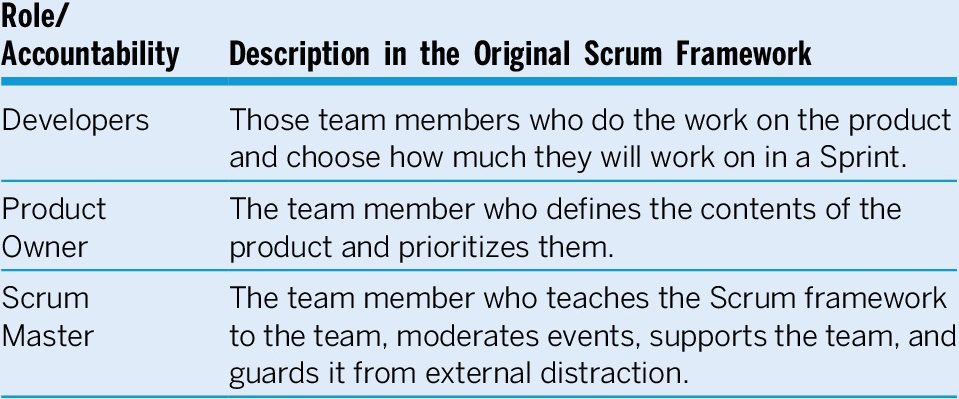
Events and Tandems
ScrumAdemia is structured by five events (table 2). The first event is the Sprint, which refers to a time-boxed period when the team completes defined parts of the project, also known as product increments. Sprints can last for one month or less; we settled for a duration of three weeks.Footnote 6 The Sprint is the “heartbeat of Scrum” (Schwaber and Sutherland Reference Schwaber and Sutherland2020, 7) and it is an overarching event that contains all of the other four events. The Sprint starts with a one-hour Sprint Planning (i.e., the second event), for which each of us prepares our Sprint Goals individually and discusses workload and potential challenges with the team. The third event, the Daily Scrum, is a 15-minute meeting every day to monitor progress toward the Sprint Goal. Team members report on the previous workday, their goals, and the challenges for that day. This results in the transparency of items, tasks, progress, and increments.
Table 2 Events in ScrumAdemia
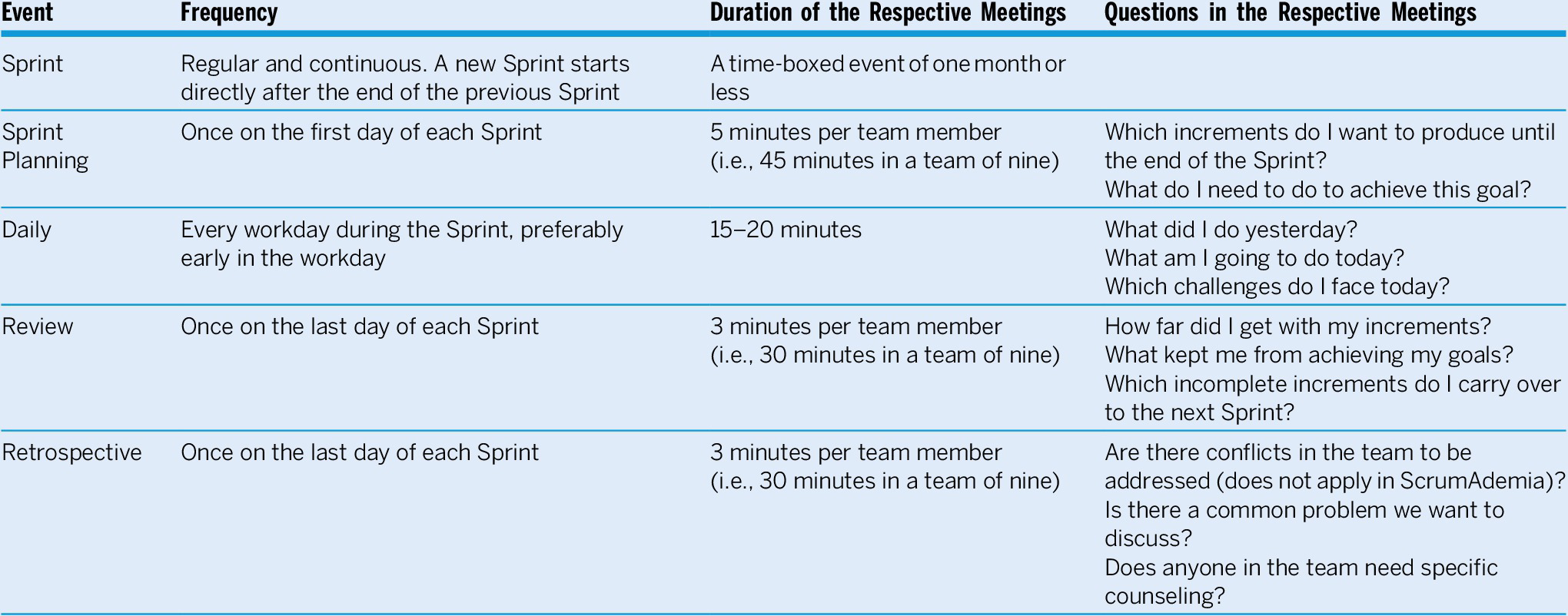
The fourth and fifth events—the Sprint Review and the Sprint Retrospective—take place on the last day of the Sprint. We dedicate a half-hour to each of these two events according to Sprint. In the review, each team member reflects for three minutes on their progress and challenges during the Sprint. The team then provides constructive feedback. To enhance collaboration, the retrospective reflects on work processes and interactions within the team. We shifted the focus of the formats to shared challenges because personal conflicts within the team rarely occur when working on individual dissertation projects. The new formats range from inviting senior researchers to share their experiences and solutions for common challenges to extended peer feedback for specific problems.
In early 2021, we also introduced what we call “Tandems” to increase transparency and commitment. Two team members conduct additional bilateral meetings during the Sprint. The Tandems compensate for parts of the original Scrum Master functions—for example, when tandem partners jointly refine Product Backlogs, spend additional time planning before the team Sprint Planning, or coach one another regarding workflows or supervisor relationships.
SCRUMADEMIA: THE PROCESS AND EMPIRICAL EXPERIENCES
We started ScrumAdemia as a type of self-experiment. It was a result of the dissatisfaction many of us shared regarding our workflows as doctoral researchers. Thus, in the beginning, we viewed it as a support structure to tackle our daily challenges in developing good working routines and to provide a framework for achieving long-term goals. However, after only a few months—and with the onset of the COVID-19 pandemic—we realized that we had developed a more sophisticated framework worth sharing with others. This led us to consider how to summarize and share our experiences to provide a guide for other researchers experiencing similar challenges in their workflows. To do so in a more informed and systematic way, we began to self-evaluate our experiences—but without the ambition of making this a separate research project. Thus, the data we provide comprise an informed and systematic illustration of our experience.
We relied on two data sources: an FGD with members of the ScrumAdemia Team and a longitudinal self-evaluation survey. The survey was taken by all team members after each completed Sprint. It consists of three multiple-choice questions regarding satisfaction as well as the challenges and successes of the previous Sprint. The dataset includes panel data for 20 Sprints: the survey was conducted from late July 2020 (almost eight months after the initial ScrumAdemia group) through November 2021. The FGD was conducted on August 3, 2021, after working with the ScrumAdemia framework for approximately 18 months. Two team members prepared, moderated, and interpreted the FGD, and five team members participated. The FGD lasted approximately 2.5 hours, during which we recapitulated our working habits before using ScrumAdemia, discussed how ScrumAdemia changed our personal way of working, and noted any remaining challenges.
During the FGD, we assessed our lives as doctoral researchers before adopting ScrumAdemia as a baseline. Certain aspects proved transversal, regardless of the project stage. Moreover, many of our challenges echo those identified in existing research. All team members reported being genuinely interested in and feeling highly motivated about working on their dissertation topic and the prospect of learning. Nonetheless, intimidation vis-à-vis the amount of work and the lack of clarity regarding how to conduct the research project also were featured.
Traditional academic training provides little guidance on how to cope with the practicalities of doctoral research. Some team members tried to manage their project by adopting daily or weekly to-do lists and waterfall-style Gantt charts for medium- to long-term planning. However, these methods did not suffice. Some experienced a lack of control over progress, as the following FGD participant remarked:
I do not recall having a lot of control over my work, even though my working hours were very routinized. I felt like I had no idea what I was doing and that I was simply trying to bridge the time between one milestone, or intermediate goal, to another. I did not work on parts of my PhD consistently but simply tried to have something to deliver for the next deadline.
Despite daily routines and regular working hours, time-management issues prevailed. We struggled to estimate correctly the time required to complete a task—for example, when running a statistical analysis. Furthermore, not having a sound perspective on the “bigger picture” and the way that the different activities fit into it hindered productivity and led to procrastination. Moreover, lack of accountability made it easy to ignore the set schedule or to not complete the task planned for the day or week.
The lack of support and feelings of isolation experienced by all team members compounded these issues. Doctoral researchers are responsible for crucial decisions and for carrying out the work on their own. Team members described feelings of stress, frustration, and inadequacy as a result. As one author related, the experience was a “rollercoaster of emotions” that went from “many positive feelings and self-confidence to the deepest lows.” Additionally, many believed that they did not have enough opportunities to receive feedback on project content and work processes with their supervisors. The dedication that the research demands often leaves little time for family and friends. The following two statements illustrate this frustration:
Before working with the Scrum Team, I often felt alone with the (normal) dissertation struggles. I was mostly in contact with postdocs who were nice and always giving advice. This was often very helpful but at the same time fed into the feeling of “not being researcher enough” (having no clue of what I am actually supposed to be doing).
I often felt left alone with my research and also as if no one was really interested in what I did. I remember that some frustration was building up, leading me to think about not pursuing a PhD at all.
What, then, has been the impact of ScrumAdemia on working conditions and overall performance? During the FGD, most of us stated that ScrumAdemia improved the workflows in several ways. As an agile project-management tool, it also provided “a structure to rely on” that in turn allows “reliability paired with flexibility.” This results in a general state of “feeling more in charge” as well as a “sense of progress.” Team members also mentioned that the Sprint structure helps to maintain an overview, especially during weeks with high workloads and many different tasks. Reassessing every three weeks also prevents working from deadline to deadline and provides a feeling of accomplishment. This applies to daily work as well because ScrumAdemia incentivizes us to formulate smaller and more concrete tasks. Moreover, the practical feedback provided during the Daily Scrum has been perceived as valuable and inspiring. As a result of the safe space that the Scrum Team provides, trust among team members and the depth of exchange are high. ScrumAdemia has allowed us to circumvent structural challenges regarding working conditions and has significantly improved workflows.
ScrumAdemia has allowed us to circumvent structural challenges regarding working conditions and has significantly improved workflows.
The longitudinal survey data support these sentiments. Figures 1 and 2 list the number of mentions of each success factor and the challenges for all 20 Sprints. “Meeting deadlines/concluding a work package” took precedence in feelings of success, followed by “receiving good feedback.” Other success factors mentioned were overachievement (e.g., exceeding Sprint Goals), having the Scrum Team as a support structure, and the feeling of being in control of one’s own workload.
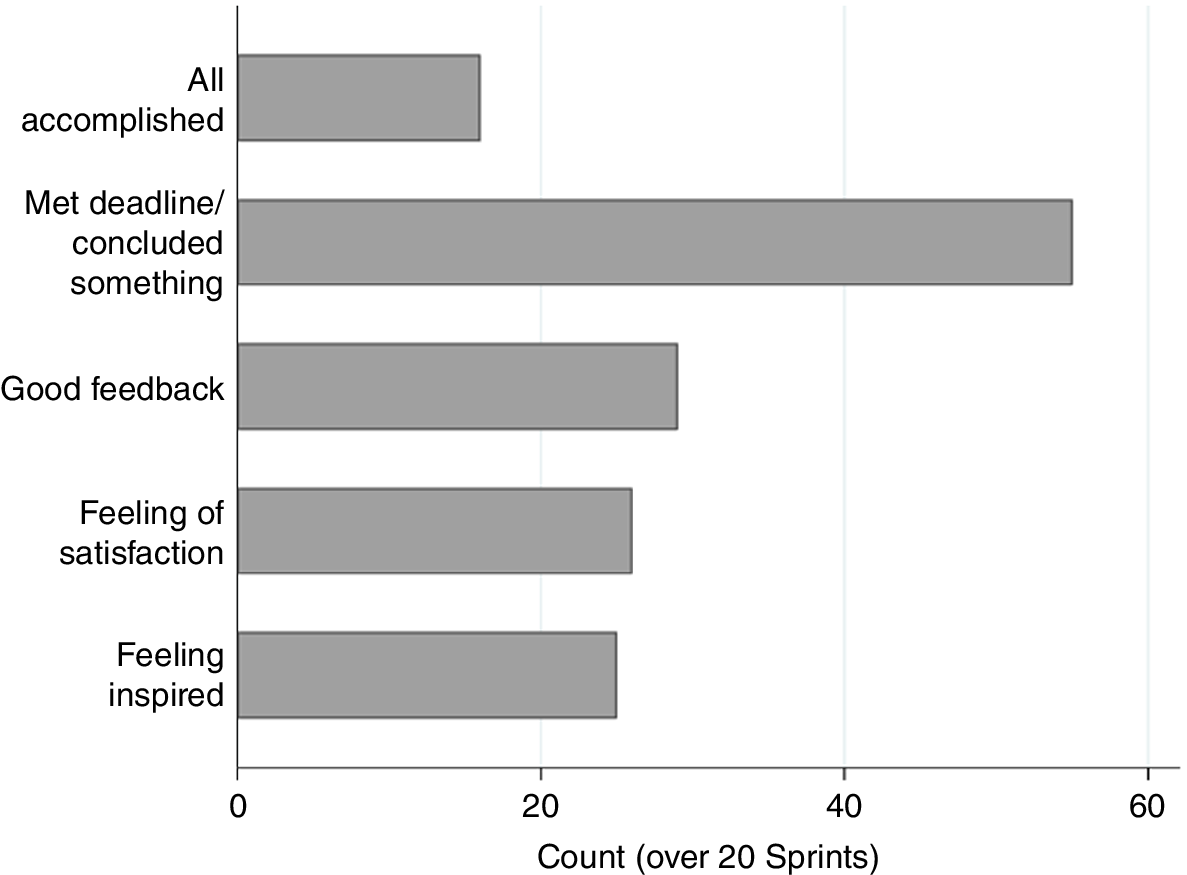
Figure 1 Success Factors
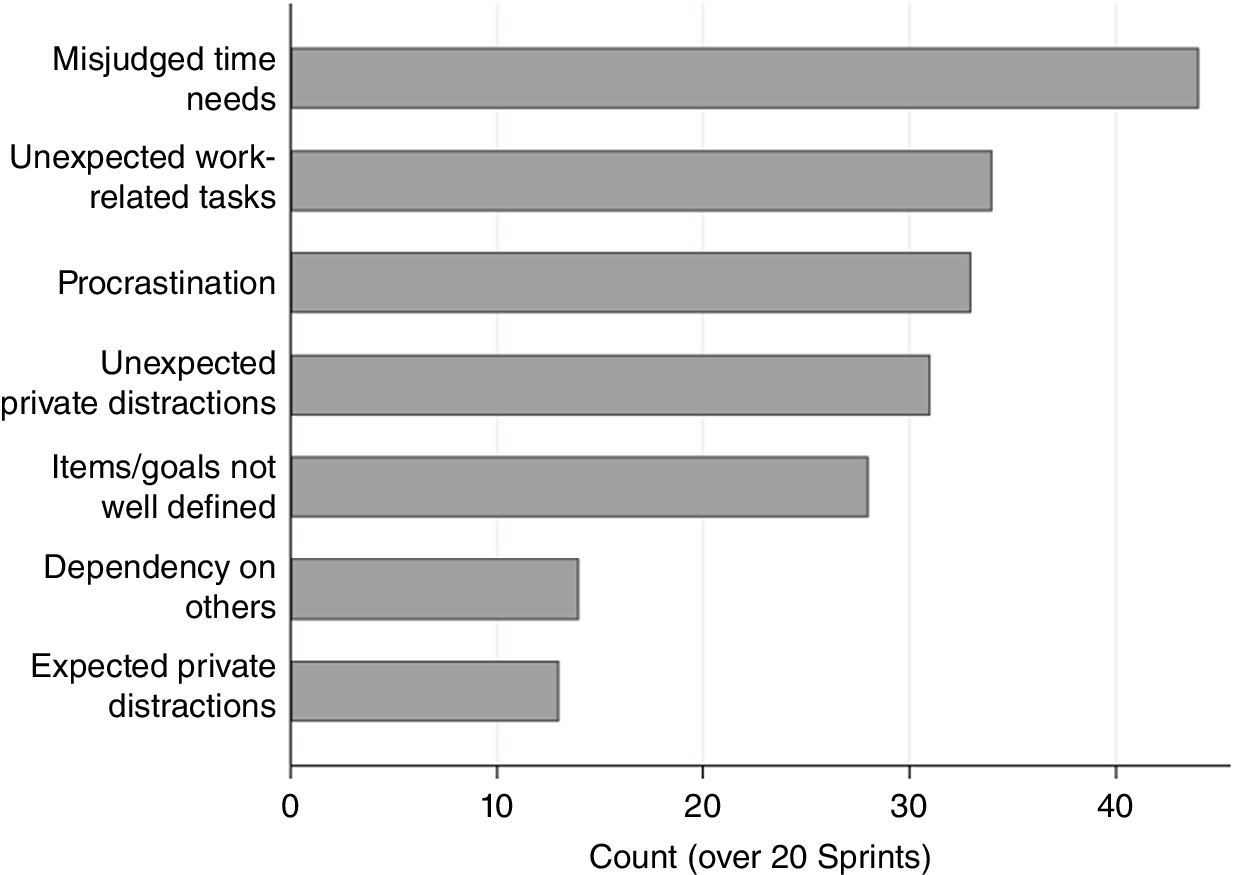
Figure 2 Challenges
However, as one FGD participant stated that, even with ScrumAdemia, we “still have to do the work” and challenges in conducting doctoral research remain present during the Sprints. “Misjudgment of time needed” was mentioned most often, although FGD participants stated that planning had improved over time. “Procrastination” remained another important source of delay, similar to private-life distractions, which often are particularly overlooked.
ScrumAdemia implies rigorous planning and promotes accountability via continuous reflection on accomplishments and challenges. Consequently, a general feeling of transparency within the team has developed. We have turned the team into a safe space in which “full transparency does not hurt,” as one member stated. In the broader academic environment, in contrast, we had the impression that we should not show our emotions. It also was mentioned that ScrumAdemia felt like a “safety net,” especially during the COVID-19 pandemic.
ScrumAdemia provided a coping mechanism for certain emotional and motivational issues that remained challenging. The extent of emotional support that the team structure offered indeed was surprising because we initially perceived ScrumAdemia as mostly a tool to improve workflows. However, it also “creates a team,” as one FGD participant described. ScrumAdemia thus directly responds to the isolation many team members felt previously. We were astonished by how similar “the emotional challenges and feelings are in the team,” by “the amount of insecurities people in the group had,” and even more by “how helpful it can be to simply share openly about our struggles.” This reaction also is reflected in the long-term commitment of the team members. Indeed, only three participants dropped out during the 18 months: two due to changes in personal/family daily routines and one because ScrumAdemia was inadequate for their work.
Overall, team members are content with ScrumAdemia and its contributions to their work and life as doctoral researchers. The fact that the ScrumAdemia team introduced additional tools (e.g., the Tandems) to improve the process also indicates its commitment to the process and conviction regarding associated benefits. The reported levels of satisfaction from the survey (figure 3) provide a strong contrast to the sentiments expressed in the FGD before we began to use ScrumAdemia.
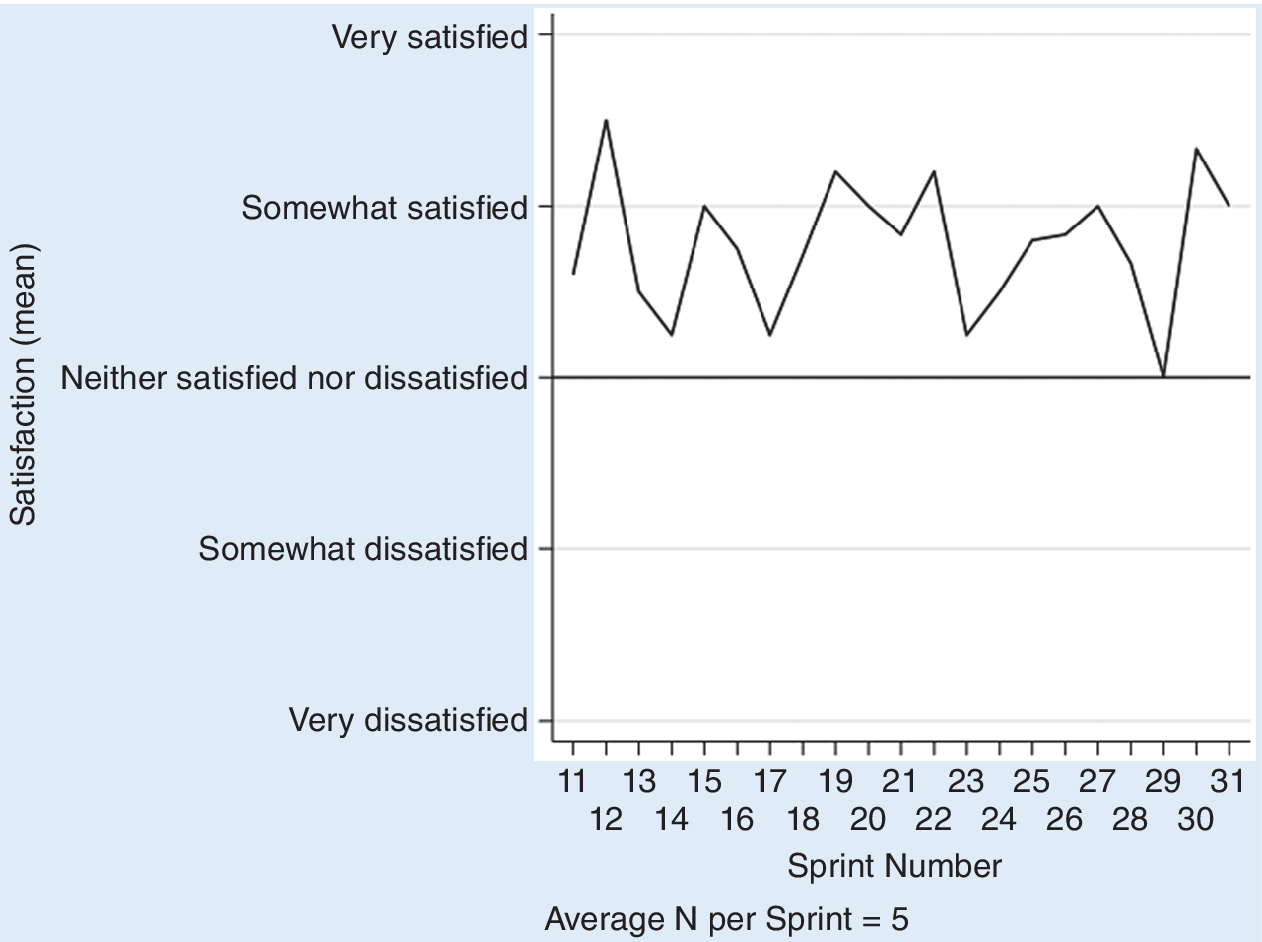
Figure 3 Satisfaction with the Sprint Process
CONCLUSION
This article introduces ScrumAdemia and illustrates how it helped us to overcome challenges related to workflows, working conditions, and mental health. In our experiences, organizational problems, time management, and the estimation of tasks have all improved. In addition to the practicalities of project management, emotional coping has been a tangible gain. ScrumAdemia supported our workflows by developing a daily structure, and it increased accountability and ownership regarding our PhD projects. The framework also allowed us to create a team that provides essential emotional support. ScrumAdemia responds to the difficulties that researchers across all levels and disciplines face daily, many of whom lack adequate guidance on how to work constructively on their projects beyond methodological training.
ScrumAdemia responds to the difficulties that researchers across all levels and disciplines face daily, many of whom lack adequate guidance on how to work constructively on their projects beyond methodological training.
In addition to spreading the adoption of ScrumAdemia or other agile methods in academia, systematic evaluation of the effects of these frameworks on the performance and satisfaction of doctoral students would be a highly beneficial next step. Although we provide the most systematic and informed assessment of our experiences, reaching wider conclusions regarding the impact of ScrumAdemia would require further research and a comprehensive impact evaluation. In addition, we introduced ScrumAdemia only four months before the onset of the COVID-19 pandemic. Our experience, therefore, is strongly intertwined with this enduring global event. Nevertheless, in our view, this demonstrates that ScrumAdemia is useful not only to overcome challenges that all doctoral researchers face but also in the context of an exceptional crisis that raises additional challenges (e.g., inducing further isolation).
Our approach has sparked interest elsewhere. We have introduced ScrumAdemia via presentations at four other research institutions, resulting in three more doctoral and postdoctoral teams adopting ScrumAdemia with our assistance and counseling. During informal exchanges, these other teams seconded our experiences concerning the challenges faced in daily work and the ways that ScrumAdemia helps to overcome them. Furthermore, we are convinced that ScrumAdemia can be applied to teams of researchers working on joint projects. However, additional challenges may emerge when the different career levels of team members (i.e., juniors, postdocs, professors, and supervisors) creating a team are considered. Whereas in our team, hierarchies do not exist and all members interact on equal footing, dependencies, gaps in knowledge and experience, and information asymmetries could introduce hierarchies detrimental to the “safe” and transparent exchange space that we cultivated. We encourage the further application and development of this framework and believe that in any type of setting, ScrumAdemia promises valuable improvement in the research process. We invite anyone struggling with similar challenges to form their own ScrumAdemia team. Try, adapt, and reiterate!
ACKNOWLEDGMENTS
The authors are enormously grateful to Markus Kirchschlager for introducing us to Scrum and creating the initial team. We also thank the German Institute of Global and Area Studies (GIGA) Doctoral Programme and the GIGA Institute for African Affairs for providing the resources for our training as Scrum Masters. An initial version of this article was presented at the GIGA Doctoral Colloquium in October 2021. The authors thank the participants of this event, particularly Insa Flachsbarth, Maren Wagner, and Lisa Hoffmann, for their comments and suggestions. Finally, we thank Cosima Meyer for her advice in the manuscript preparation and submission process.
DATA AVAILABILITY STATEMENT
Research documentation and data that support the findings of this study are openly available at the PS: Political Science & Politics Harvard Dataverse at https://doi.org/10.7910/DVN/5LN0TJ.
SUPPLEMENTARY MATERIALS
To view supplementary material for this article, please visit http://doi.org/10.1017/S1049096522001408.
CONFLICTS OF INTEREST
The authors declare that there are no ethical issues or conflicts of interest in this research.







